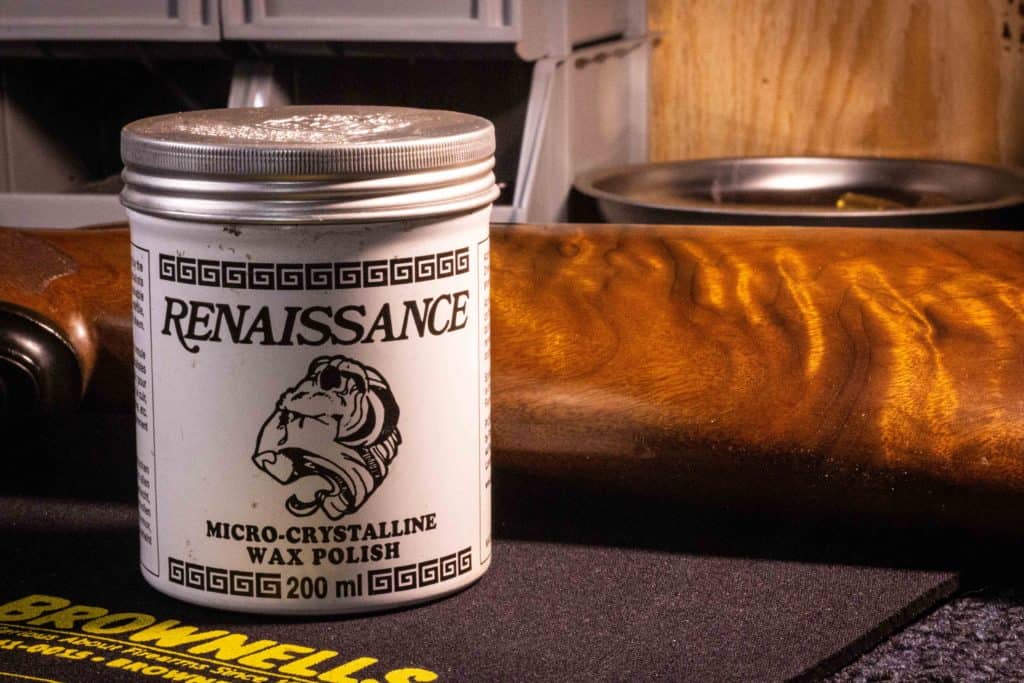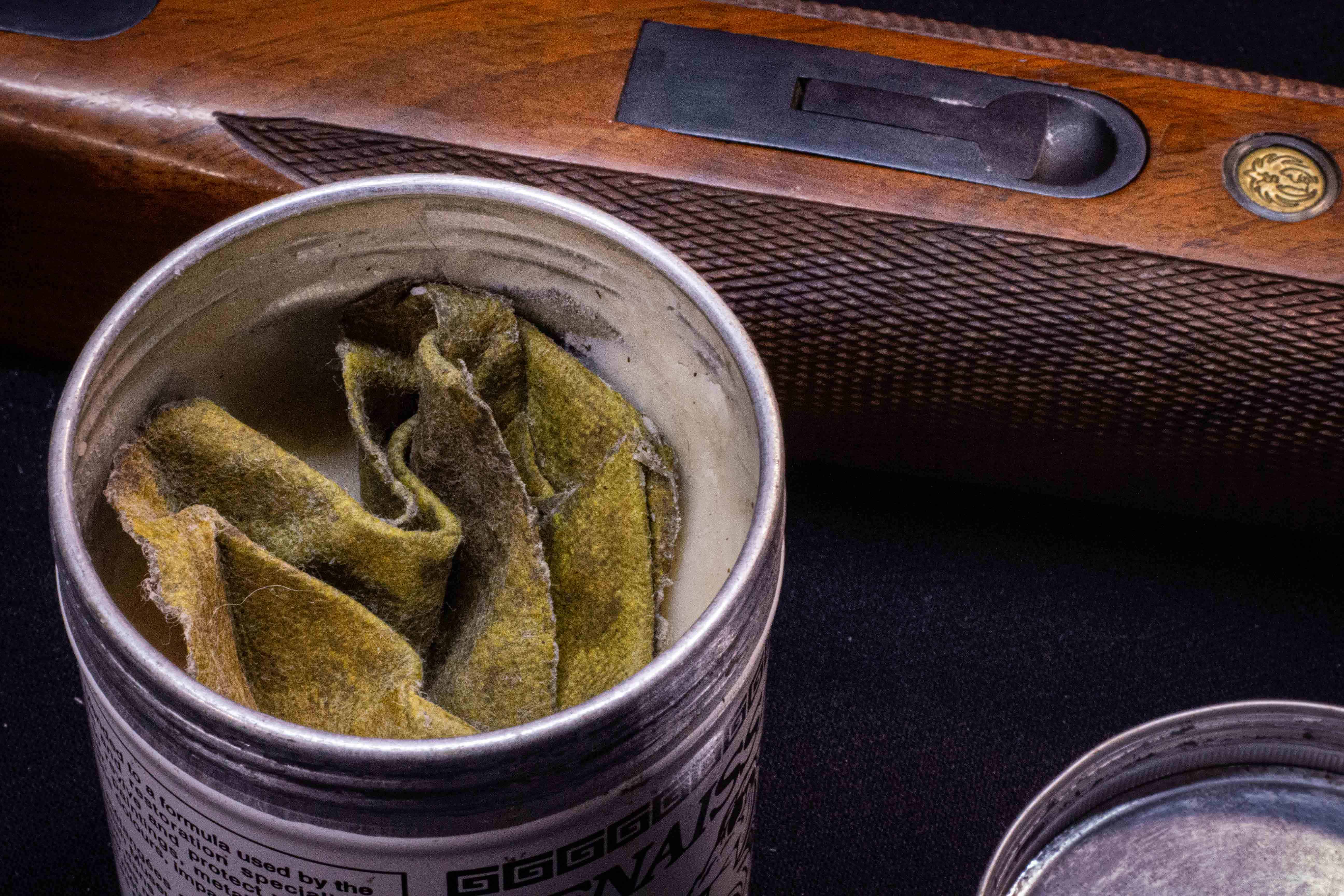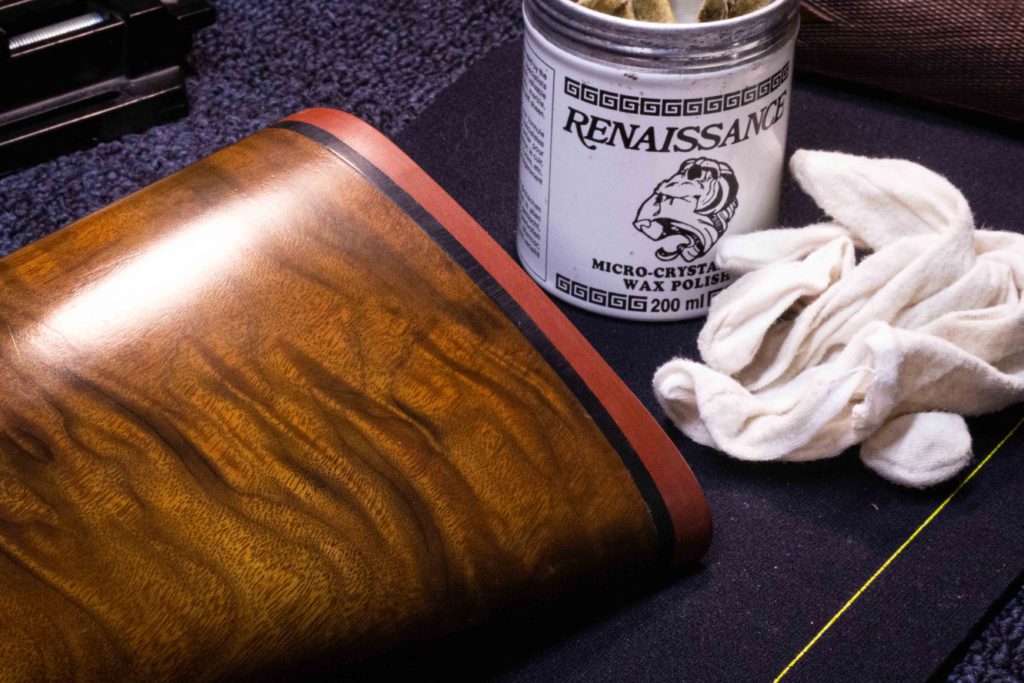
The wood gunstock is a thing of beauty and should be treated as such. There are small things you can do that will protect it even more than the existing finish on the gun. Renaissance wax is perfect for this application.
Applying Renaissance wax to the stock of a firearm is the single best way to protect it year to year. It takes less than five minutes to apply and will clean, enhance, and protect your firearm. Adding this extra layer of protection is extremely simple and requires no disassembly.
It is harmless to use and will revive and preserve new and old wood gunstocks.
Affiliate Disclosure: This article may contain affiliate links. When you use these links, I earn a small commission from each sale generated at no cost to you. This commission helps me continue to put out free content. I work a full-time job that I am very happy with; therefore, I don’t need this commission and am not obligated to speak highly of any product. Everything written is my own opinion: the good, the bad, and the ugly.

What is Renaissance Wax?
Renaissance wax is made by Picreator Enterprise Ltd. of London, England, and is a semi-synthetic fossil-origin wax developed by a British museum back in the 1950s. White in color, it provides a transparent layer of protection and won’t turn yellow over time. Additionally, it is chemically neutral and free of any damaging acids, meaning that it safeguards your arsenal from any mold or oxidation.
The back of the Renaissance wax can provide this description;
“Refined waxes blended to a formula used by the British Museum and restoration specialists Internationally to revive and protect valuable furniture, leather, paintings, metals, marble, ivory, etc. Freshens colours, imparts soft sheen.”
Yes, you read that right. Museums all over the world use this to not only protect their historic firearms but also for everything from furniture to paintings!
Use coupon code KTG10 to get 10% off your order of $150 or more at Brownells.
How Does it Work?
The wax is applied as a very thin layer that seals the surface, reducing the opportunity for moisture to enter. This application primarily does three things; it cleans, enhances, and protects. First, it lifts dirt and debris from the surface, removing any potentially damaging dust and oils. Then, the layer of wax enhances the coloring and depth of the wood without harming the existing finish. Finally, it is entirely waterproof and protects the wood from moisture and humidity. While hunting, I’ve sat and watched rain bead off of my rifle stock.

Applying Renaissance Wax to Your Gunstock
Applying the wax is very easy and should become part of your cleaning regimen. The wax will not harm metal or metal finishes such as bluing; therefore, disassembly isn’t required. However, pulling the metal out of the stock will allow you to access some harder-to-reach areas.
- Apply sparingly with a soft cloth.
- Wait a minute or two.
- Buff gently, again, using a soft cloth.

Additional Tips for Applying Renaissance Wax
- Use a lint-free cloth when applying and buffing the wax. This will save you the headache of pieces of fabric remaining on the surface.
- This wax is mildly abrasive and will quickly dull and clog up checkering tools. If you plan to have your stock checkered in the future, hold off on the wax application.
- The stock finish has to be completely dry before applying this wax. Applying the wax over a finish that is still curing will never dry and feel sticky. Therefore, wait a couple of weeks after finishing before applying it.
- Occasionally, apply it to the inletting and underneath the buttpad or buttplate. This will seal the open grain and resist moisture and oil from entering, reducing the chances of oil-soaked wood, which results in splitting.
Can You Use Renaissance Wax on Metal?
Renaissance wax is not harmful to metal or metal finishes used on firearms. It is a great option for long-term storage; however, gun oil or grease may be a better option here.

How Often Should You Apply It?
How frequently to apply the wax to a gun solely depends on the amount of use the gun will get. Consequently, I apply it to my hunting rifles and shotguns at either the beginning or end of each season. This ensures that the finish and stock are protected throughout the year. The initial application may be all you need to restore and revive an old firearm.
Lastly, a little goes a long way! The 200 ml can that Brownells sells here will last a long time and not dry out. I have had my can for five years now and still have half of it left.
Related Articles: How to Clean and Lube an Over/Under Shotgun

Written by: Kurt Martonik
Kurt is a Gunsmith, Reloader, Hunter, and Outdoorsman. He grew up in Elk County, Pennsylvania, where he became obsessed with the world of firearms. Following high school, Kurt enlisted in the United States Air Force as a Boom Operator, where he eventually rose to the position of Instructor. After his military service, he attended the Colorado School of Trades(CST) in Lakewood, CO for gunsmithing. Following graduation, he accepted a job at C. Sharps Arms in Montana, where he worked as a full time stockmaker and gunsmith.